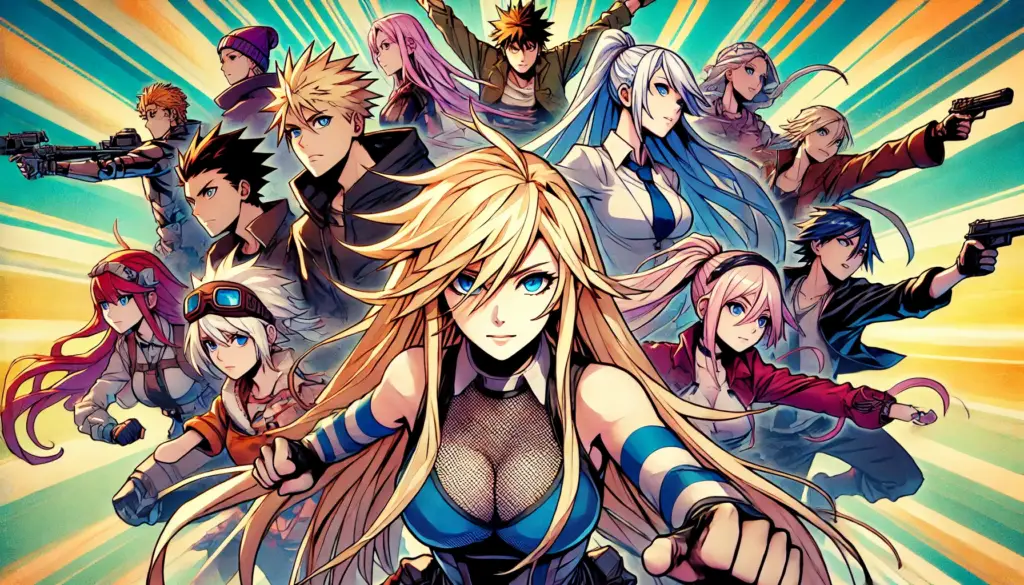
When Western viewers first encounter Japanese anime, one question often surfaces:
“Why do so many anime characters look white?”
Blonde hair, blue eyes, sharp noses, and tall figures—these traits seem far removed from the average Japanese face. Yet in Japan, these characters are almost never referred to as foreigners. So, what’s really going on?
This blog explores the complex relationship between anime character design, race, and perception—both inside and outside Japan—and why many Japanese people don’t see anime characters as white at all.
🎭 Visual Tropes vs. Racial Identity
Anime has its own visual language, evolved from decades of stylization rather than attempts at realistic representation. Huge eyes, small noses, colorful hair—these are not meant to mirror specific ethnicities but instead convey expressiveness, personality, and fantasy.
In fact, many scholars and artists argue that anime characters are designed to be “non-racial” or “default Japanese”, with their appearance filtered through aesthetic conventions, not ethnicity.
For example:
- Big eyes: Inspired by Osamu Tezuka’s admiration for Disney and early American animation.
- Hair color: Often used symbolically. Blonde may signal a lively or rebellious character, while dark blue or black implies mystery or intelligence.
- Facial structure: Simplified and ambiguous to allow viewers to self-insert, regardless of ethnicity.
🇯🇵 How Japanese People Perceive Anime Characters
Surprisingly, most Japanese viewers don’t think of anime characters as white. Rather, they interpret them as Japanese unless explicitly stated otherwise. This is especially true when the story is set in a Japanese school, town, or family setting.
Take popular shows like Demon Slayer, Your Name, or Jujutsu Kaisen. Despite their protagonists having varied hair colors and exaggerated features, the setting and context clearly mark them as Japanese:
- They speak Japanese.
- They engage in local customs.
- They live in recognizably Japanese environments.
So, when a foreign fan asks, “Why do they all look white?”, the Japanese response is often confusion: “What do you mean? They’re just anime characters.”
🌍 Western Interpretations: Through a Racialized Lens
In contrast, Western audiences—particularly in countries with histories of racial tension—often interpret appearance through a racialized lens. To them, a character with fair skin and light eyes resembles a white person. This interpretation can clash with the creator’s intent.
This disconnect has led to online debates:
- Accusations that anime “erases Asian features”
- Criticism that it promotes Western beauty standards
- Claims of unconscious internalized racism
But these criticisms often ignore the cultural and historical context of Japan, where racial identity is not coded in the same way as in the West.
💬 Japanese Creators Speak Out
Notably, many anime creators have addressed this perception gap. Here’s what some have said over the years:
- “We don’t draw characters with a specific race in mind.”
- “Anime is fantasy. The characters are who we imagine them to be, not based on race.”
- “In Japan, we see them as Japanese, unless they’re explicitly foreigners.”
In interviews, directors and designers have emphasized the symbolic nature of design choices, reaffirming that fantasy often outweighs realism in the world of anime.
🧠 Symbolism Over Realism
One way to understand this is through “symbolic abstraction”. In Japanese media, character traits are often represented visually:
- A blonde character may represent someone with a fiery or foreign personality.
- Blue eyes may be used to depict spiritual sensitivity or a nonconformist mindset.
- Exaggerated eyes express a broader range of emotion, not Western heritage.
These are tools, not statements of racial identity.
🏫 Real-World Examples: Are They Actually White?
Let’s look at some major anime characters often cited as “white-looking”:
- Naruto Uzumaki (Naruto)
Blonde and blue-eyed, yet explicitly Japanese in origin, values, and setting. - Light Yagami (Death Note)
Sharp Western features, but a high school student in Tokyo with a Japanese name and family. - Sailor Moon (Usagi Tsukino)
Her civilian name, school uniform, and cultural cues are all unmistakably Japanese. - Goku (Dragon Ball)
An alien from another planet, inspired more by Journey to the West than any racial framework.
Despite these characters’ appearances, they’re grounded in Japanese life, language, and myth.
🧭 A Cultural Mirror, Not a Racial Statement
Rather than trying to depict “white people,” anime serves as a mirror of Japanese self-image—an aspirational, idealized, sometimes exaggerated reflection.
For example, the ideal of pale skin has long existed in Japanese aesthetics (e.g., Heian-period literature), not because of Western influence but due to cultural beauty norms.
Furthermore, anime thrives on escapism, and its characters are meant to transcend realism altogether.
🌐 Why the Debate Persists
The global popularity of anime has brought this visual ambiguity into the spotlight. As anime becomes more international, cultural misunderstandings increase.
For Western audiences:
- Representation is a hot-button issue.
- Appearance is heavily tied to identity and inclusivity.
For Japanese audiences:
- Anime characters are not political symbols.
- Race is not always a conscious consideration in design.
This cultural clash is at the root of the ongoing conversation.
✍️ Final Thoughts: Beyond Race, Toward Expression
The idea that anime characters are “white” reflects more about the viewer than the character. Where some see whiteness, others see fantasy, symbols, or simply “anime style.”
In the end, asking whether anime characters are white might be the wrong question.
A better one might be:
“What does this character represent, and why was it designed that way?”
Because in anime, design is emotion, theme, and symbolism—not just race.



















































